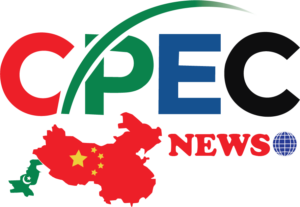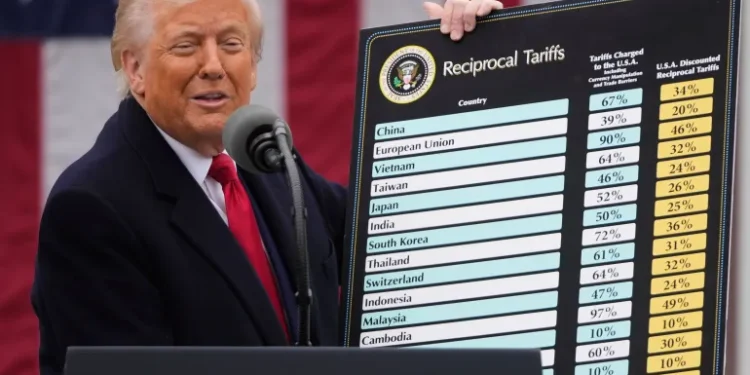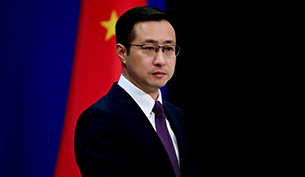ISLAMABAD (Web-Desk); Washington has unveiled a sweeping set of new tariffs targeting dozens of countries, including Pakistan and India, as part of a broader shift in American trade policy under President Donald Trump. The measures, which take effect within a week, impose duties ranging from 10 to 50 percent on a wide array of imports, with the administration citing national security and economic interests as justification.
Pakistan, which recently concluded a trade agreement with the United States, will now face a 19 percent tariff on its exports. The deal had raised hopes in Islamabad for enhanced investment opportunities, particularly in the energy sector, with Trump even hinting at cooperation on Pakistan’s untapped oil reserves. However, the final terms reflect Washington’s broader push for reciprocal tariffs, and Pakistan finds itself among 69 nations affected by the new rates.
India will be hit with a 25 percent tariff starting August 1. This is slightly lower than an earlier proposed rate but still significant. The United States has also warned of unspecified penalties over India’s continued defense and energy ties with Russia. The move is widely seen as part of Washington’s attempt to pressure New Delhi to align more closely with American strategic interests.
Canada has been targeted with increased tariffs as well. The duty on certain Canadian imports has been raised from 25 to 35 percent, particularly those linked to fentanyl-related products. This sharp rise came shortly after Canadian Prime Minister Mark Carney expressed support for Palestinian statehood at the upcoming UN General Assembly, drawing a pointed rebuke from Trump. While some Canadian exports remain exempt under the existing US-Mexico-Canada Agreement, the tariff hike signals rising diplomatic friction between the two neighbors.
In contrast, Mexico has received a 90-day reprieve from proposed 30 percent tariffs. The decision came after a phone call between President Trump and Mexican President Claudia Sheinbaum. Trump said the delay would allow time to finalize a broader trade agreement, particularly concerning efforts to curb fentanyl smuggling.
Brazil has also been targeted with steep tariffs, with Washington announcing a 50 percent rate on Brazilian goods starting August 6. The White House explicitly linked the decision to Brazil’s legal proceedings against former President Jair Bolsonaro, a close Trump ally. However, to soften the economic blow, items such as orange juice, civil aircraft, and energy products have been excluded from the new tariffs.
South Korea, meanwhile, reached a deal with the United States to lower tariffs from a planned 25 percent to 15 percent. In return, Seoul committed to $350 billion in American investments and agreed to purchase $100 billion worth of liquefied natural gas and other energy supplies. The new rate aligns with existing US agreements with Japan and the European Union.
China is facing an August 12 deadline to finalize a new trade agreement with the United States. Treasury Secretary Scott Bessent said negotiations with Beijing were ongoing but not yet concluded. He noted that trade talks held in Stockholm had involved tough discussions and that final approval still rests with President Trump. Failure to reach a deal could trigger a new round of punitive tariffs.
Syria has been hit with the highest tariff rate under the new regime—41 percent. Although no detailed explanation was given, US officials referred to broader national security concerns in the region.
The European Union managed to secure a limited deal that reduces tariffs on its exports to the United States to 15 percent, down from a proposed 30 percent. European Commission President Ursula von der Leyen confirmed that some agricultural products will be exempt, although she did not specify which ones. French President Emmanuel Macron, however, warned that the negotiations are far from over, stating during a cabinet meeting that Europe must remain firm in defending its economic interests.
The wide-ranging tariffs were enacted through an executive order signed by President Trump, citing the 1977 International Emergency Economic Powers Act. He argued that persistent trade imbalances pose a threat to the country’s security and justified the tariffs as a corrective measure. However, the policy is facing legal scrutiny. A federal appeals court recently heard arguments questioning the administration’s use of emergency powers to impose tariffs unilaterally.
With more trade negotiations reportedly underway, administration officials have indicated that additional deals or revisions may follow. In the meantime, the new tariffs mark a significant escalation in the Trump administration’s effort to reset global trade rules in Washington’s favor.
















